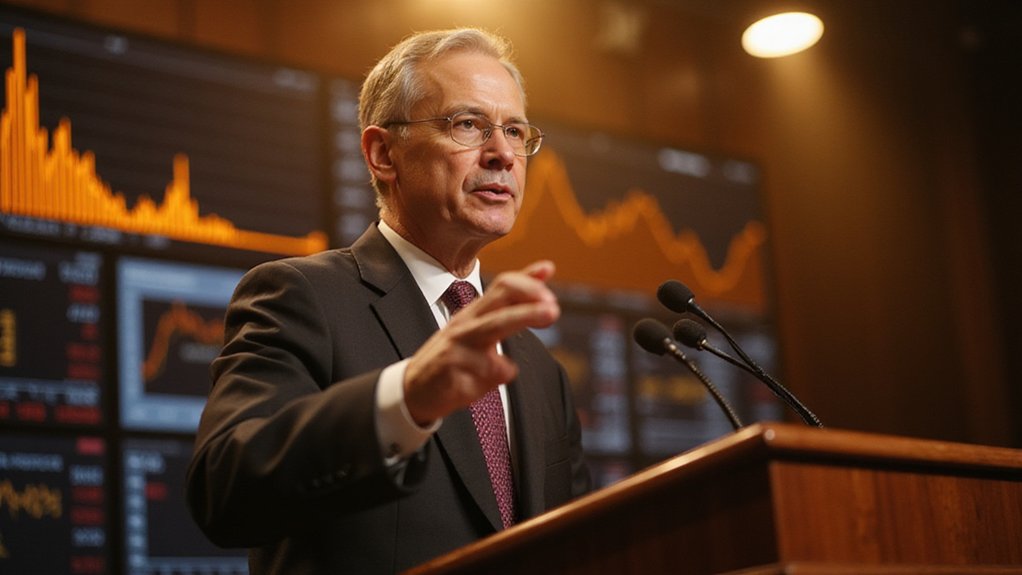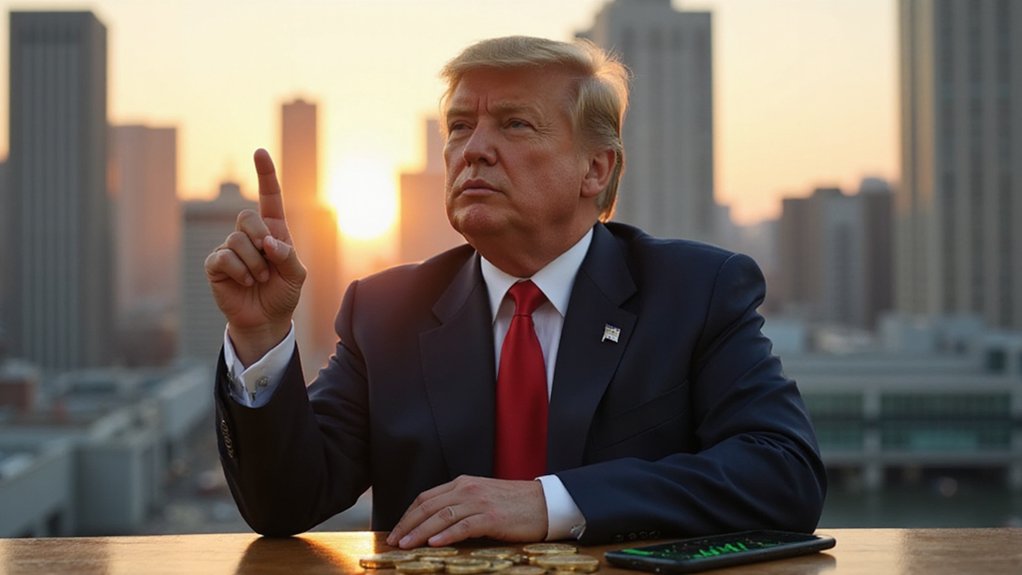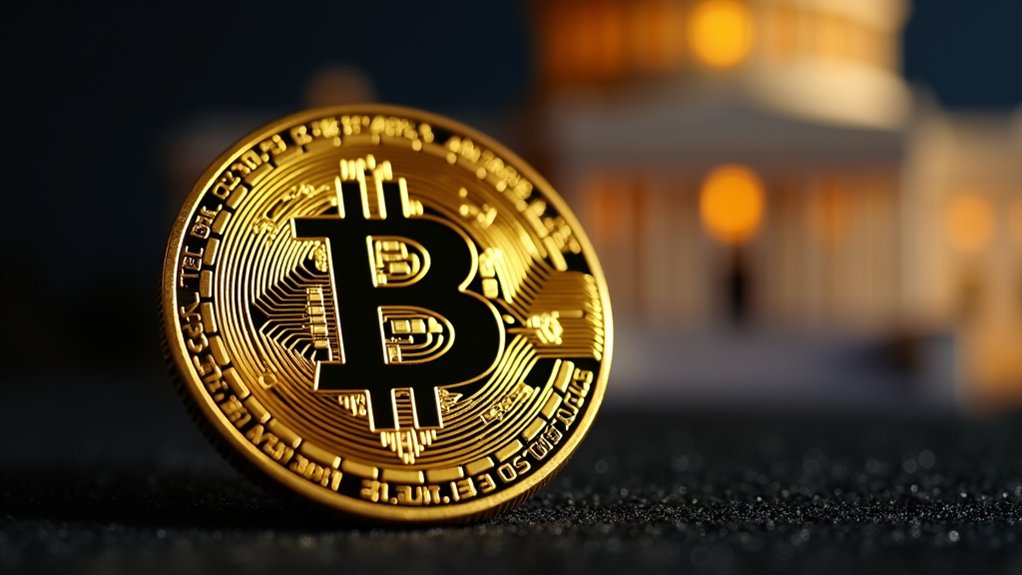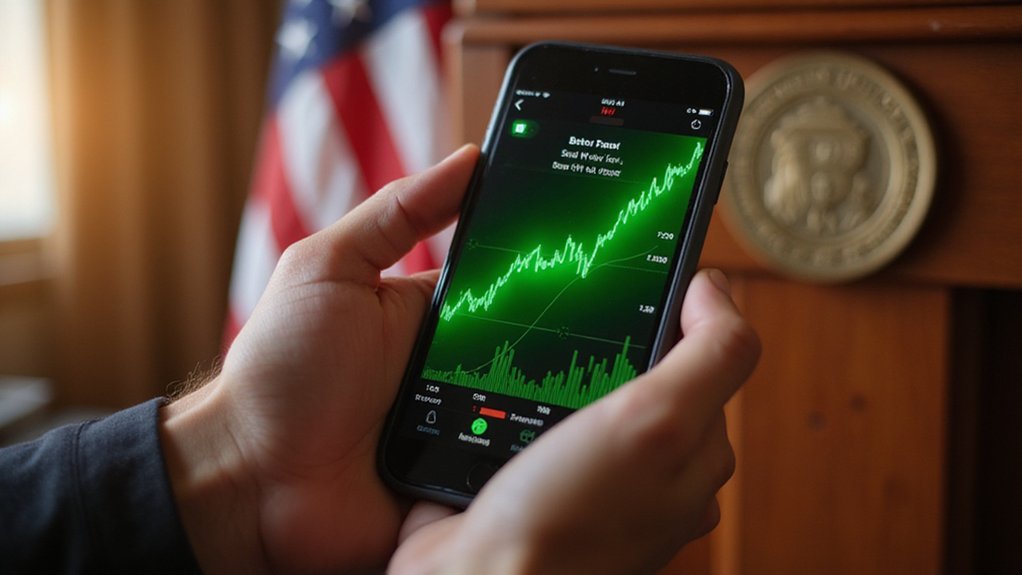The delicate choreography of central banking rarely allows for bold proclamations, yet Federal Reserve Chair Jerome Powell‘s latest address managed to thread the needle between hawkish vigilance and dovish pragmatism with a precision that sent ripples through traditional markets and, perhaps more tellingly, the volatile domain of cryptocurrency.
Powell’s assessment of the economic landscape painted a portrait of cautious complexity. Headline PCE inflation registered 2.6% in July 2025, with core inflation climbing to 2.9%—figures that reflect the stubborn persistence of price pressures despite the Fed’s restrictive monetary stance. The chair’s characterization of inflation risks as “tilted upside near term” carried particular weight, especially given the uncertain timing of tariff impacts filtering through supply chains like a slow-burning fuse.
Inflation’s stubborn persistence at 2.6% headline and 2.9% core reveals the Fed’s restrictive stance hasn’t yet tamed underlying price pressures.
The labor market narrative proved equally nuanced. Payroll growth has decelerated dramatically to approximately 35,000 jobs monthly—a stark contrast to 2024’s robust 168,000 pace. Yet unemployment remains steady at 4.2%, creating what amounts to a statistical mirage where apparent stability masks underlying fragility. Powell’s acknowledgment of downward employment risks suggests the Fed recognizes this precarious equilibrium. The Fed’s analysis revealed significant downward revisions for May and June employment data, further underscoring the difficulty in assessing real-time labor market conditions.
Market reactions were swift and telling. Major indexes surged over 1% as investors parsed Powell’s measured tone for hints of future accommodation, while Treasury yields fluctuated in response to his data-dependent messaging. More intriguingly, cryptocurrency markets demonstrated renewed bullishness, with Bitcoin recovering from approximately $112,320 to $116,859 following the speech—a movement that reflected growing confidence in the Fed’s balanced approach. This price action coincided with institutional investors viewing periods of consolidation as strategic opportunities for Bitcoin ETF inflows, particularly as digital assets continue their fundamental recalibration within traditional portfolios.
The political dimension adds another layer of complexity. With a Trump-appointed successor potentially arriving in 2026, Powell’s current framework emphasizing dual mandate adherence and the 2% inflation target takes on strategic importance. His rejection of emergency rate cuts as lacking economic justification serves as both policy guidance and institutional positioning. The broader economic context shows GDP growth slowed to 1.2 percent in the first half of the year, reflecting reduced consumer spending patterns.
Perhaps most notably, Powell’s simultaneous release of the revised Statement on Longer-Run Goals and Monetary Policy Strategy signals the Fed’s commitment to maintaining credibility amid shifting economic currents.
The challenge ahead involves maneuvering tariff-induced price pressures while supporting labor market stability—a balancing act that will likely define monetary policy through 2025 and beyond.







